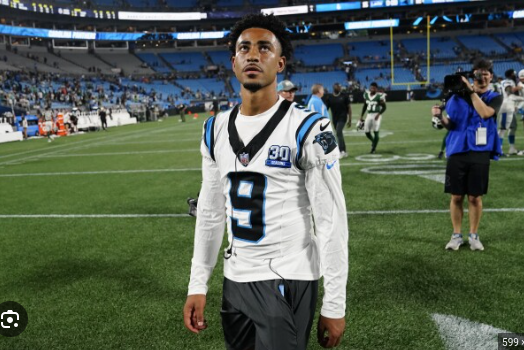Between 1.7 and 3 million concussions happen every year. We need to fix that. Most of them are from falls, and football players get them the most. Quarterbacks are always under pressure every game they play because more than three people are going after them each play.
Recently, Miami Dolphins quarterback, Tua Tagoviloa, got his third concussion in two years which made people talk more about concussions. On the middle school level, it’s also important to consider as students are playing football for the first time.
Recently, seventh grader Alec Smajlovic got a concussion.
“When I got hit, it just felt like a massive shock going through my body. After the tackle, I had to go to the sideline but on my way I was stumbling around and I was super dizzy,” Smajlovic. “The recovery wasn’t bad, I just needed to rest and after a day or two I was feeling well.”
WMS Nurse Stacey Brown added, “Always be mindful of how your body feels, especially after a head injury. Visit a nurse if you have hit your head here at school and or in Athletics/PE”.
There are ways to combat concussions early on in a child’s life. According to https://www.choa.org/parent-resources/concussion/concussion-prevention-in-kids-and-teens , here are some ways people can do that:
- Don’t allow other children to carry your baby.
- Don’t leave your baby on a bed or couch.
- Don’t use baby walkers that have wheels, as these are prone to tipping.
- Always use safety straps on changing tables and in grocery carts and high chairs.
- Secure large pieces of furniture, such as bookshelves and TVs, to the floor or wall to prevent them from tipping over on your child.
- Make sure your child rides in an approved child safety seat or booster seat in the car.
- Keep windows and screens locked, or install safety guards to keep your child from falling out of them.
- Use safety gates at the top and bottom of stairs.
- Make sure the surface on your child’s playground is made of shock-absorbing material, such as hardwood mulch or sand.
At the middle school level, tackle football can lead to concussions as well. According to Coach Deontae Grixby, “In football, it is important to wear the proper protective gear that can help prevent concussions. This includes getting properly fitted for a helmet, mouthguards, wrist guards, and knee and elbow pads. The protective gear needs to be maintained, and worn consistently and correctly.”
The following steps outline the Humble ISD Concussion Protocol:
1) When a student-athlete has suffered a concussion, they will typically be advised by a healthcare provider to rest for no more than 2-3 days after the injury. This is when symptoms, like headaches or fatigue, are usually most severe.
2) The student-athlete must be seen by a physician and cleared to begin the district’s Return-To-Play Protocol.
3) School personnel will be notified of the student-athlete’s concussion, so they can monitor the student and make the necessary accommodations and modifications to their learning environment.
4) The Treating physician must provide a written statement indicating that, in the physician’s professional judgment, it is safe for the student to return to play.
5) The student-athlete must complete the Return-To-Play Protocol before returning to full sports participation. This stepwise progression program includes light and moderate aerobic exercises, sport specific non-contact drills, sport specific light-contact drills, and full contact practice.
Coach Grixby also said, “If you suspect that someone has suffered a concussion, you first want to check their mental awareness and eyes. Give them anti-nausea tablets for nausea and vomiting. Ensure that they get enough rest but wake them every hour for a period of time. Apply ice packs to swollen or painful areas, and give them painkillers for headaches. Lastly, make sure they are hydrated and help them eat normally.”
In recent years, NFL concussions have been at the center of media attention. This was especially true following Tagaliova’s recent concussion.
“Over the past several years, the NFL has taken many steps to reduce concussions. They have banned helmets that don’t perform well in tests and developed position-specific helmets for players. They have also made rule changes that have eliminated blindside blocks, changed how kickoffs are conducted, and penalized players for targeting. Targeting in hitting an opponent in the head or neck area with any part of the body, usually the helmet. Furthermore, they have used an AI-powered system that measures the number of head impacts, and also used data from game video and sensors in mouth guards,” Coach Grixby added.
While the WMS football season has come to a close, it is still important for students and coaches to know what they can do to best prevent these kinds of injuries.
“We teach our student-athletes how to tackle and hit without leading with their head. We teach them to tackle with their shoulder and not their helmet. Before the season, we ensure that helmets fit well and are certified by the National Operating Committee on Standards for Athletic Equipment (NOCSAE). Lastly, we do in season weight training that strengthens the neck and core muscles. This can enhance stability and reduce concussion risk,” Coach Grixby stated.
In addition, Coach Grixby said, “On a personal note, I have suffered three concussions during my football career. One of them hospitalized me for two days. I suffered the most excruciating headache, dizziness, nausea, and my eyes to this day are sensitive to lights.”
Now Tagaliova has suffered his third concussion, and as a middle schooler, I think we should be able to fix that.



















